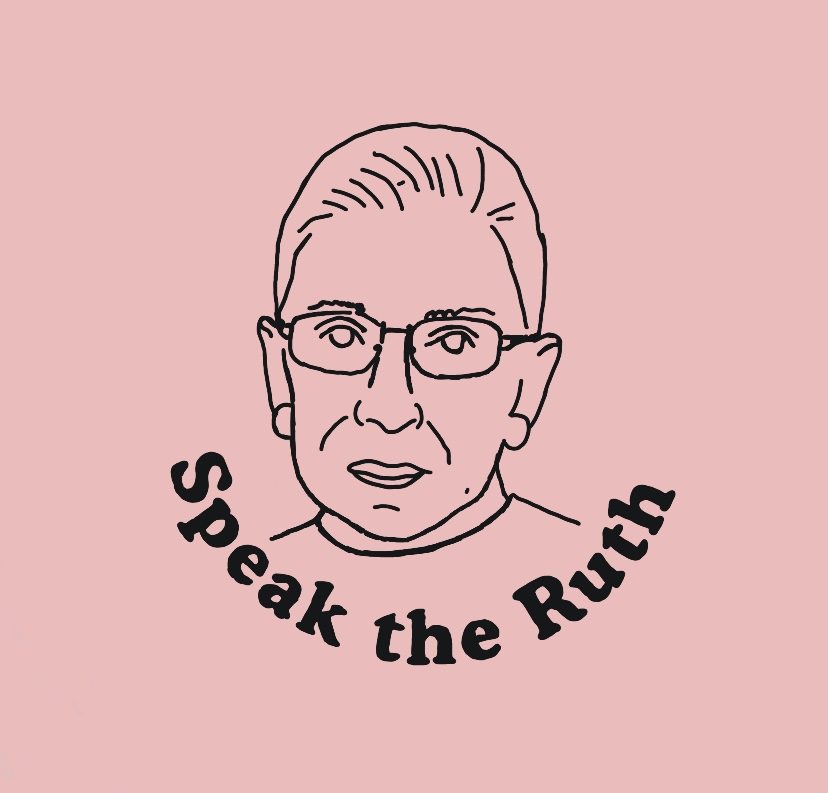Supreme court justice passes away at 87
Ruth Bader Ginsberg, Supreme Court Judge for over 20 years, passed away due to complications of metastatic pancreas cancer. Her assertion of the change of society persisted and was challenged by many, though these challenges did not compare to her passion and soul.
Justice Ginsburg, through surviving cancer in the past and overcoming the impossible that she made possible, gave her word to serve on the Supreme Court until she could not serve anymore. She upheld this promise until Friday, Sept. 18, when she passed away in her home in Washington D.C. at the age of 87. The announcement of her death resulted in the outcries via social media and outpours of individuals on the steps of Supreme Court, grieving on the physical and symbolic steps that which preside due to Ruth Bader Ginsburg.
Born in Brooklyn, N.Y. on March 15, 1933, Ginsberg grew up in a low-income household with a high value on independence that which influenced her to have high standards for herself. She excelled at school and went to earn her bachelor’s degree in government at Cornell, graduating top of her class. She attended law school at Harvard and finished at Columbia in New York where her husband received a job.
Justice Ginsburg has dedicated herself to not just her career but to society to eliminate the gender-based stereotypes in regulations and legislation. The origins of her legacy can also be traced to her job of working as a clerkship in the United States District Court of Appeals in New York due to the inability to find a job in the male-dominated career. She did this while simultaneously teaching at Rutgers University School of Law, then at Columbia Law School. At Columbia, Ginsburg became the university’s first female professor. More attention was drawn when she led the Women’s Rights Project. In Reed v Reed, a Supreme Court landmark case, Ginsburg argued in front of the Supreme Court in 1971. After winning the case, it shook headlines around the country; since the 14th Amendment had been ratified in 1868, the Supreme Court struck down a state law because women were discriminated in violation of the Equal Protection Clause.
Ginsburg continued to argue cases of sex discrimination before the Supreme Court. In 1980, President Carter appointed her to the U.S. Court of Appeals for the District of Columbia Circuit. After 13 years, President Bill Clinton appointed Ginsburg for the United States Supreme Court. She was the second woman on the Court.
Justice Ginsburg, now on the high court, was often called on to rule in cases concerning women’s rights. She participated in the United States v. Virginia in 1996, ruling that an all-male educational institution could not be operated by the state with taxpayer dollars.
She also joined in the majority opinion in Stenberg v. Carhart (2000), striking down a Nebraska law banning so-called “partial birth” abortions. She dissented vehemently in Ledbetter v. Goodyear Tire (2007), in which an Alabama woman sued unsuccessfully for back pay to compensate for the years in which she had been paid substantially less than junior male colleagues performing the same job. The U.S. Congress would later address the issue of pay equity through legislation known as the Lily Ledbetter Fair Pay Act of 2009.
Ruth Bader Ginsberg, Supreme Court Judge for over 20 years, passed away due to complications of metastatic pancreas cancer. Her assertion of the change of society persisted and was challenged by many, though these challenges did not compare to her passion and soul. She became an unlikely icon and then became the structure, the bones, of our generation. Without her, we would not have the developed society we have today.


